Looking forward to the 1960s
 First published in Blueprint, March 1988
First published in Blueprint, March 1988Caught between celebrations and lamentations of the of the 20th anniversary of the student unrest of May 1968, we have lost sight of the real significance of the 1960s and their lessons for the unrevolutionary present
This article, written more than 30 years ago, takes issue with both nostalgia and forgetfulness about for the famous decade.
IS GOD DEAD? asked a famous, deep-black, type-only cover of Time magazine one week in the late 1960s. A lengthy survey of concerned American pastors and philosophers produced inconclusive results; but if indeed He did pass away in that heady decade, a resurrection has since surely taken place. Notwithstanding the adulterous exploits of Jim Bakker, Christianity has boomed in the USA of the 1980s. There is presidential contender Pat Robertson, the Reverend Jerry Falwell, Senator Jesse Helms. They may be dotty, but they command the support of millions. Even in Britain, church attendances are down but popular belief in a deity is up – or so the polls say. Thus, if today’s rock charts are dominated by 1960s revivals, religious revivalism has also revived.
In fact, everybody wasn’t rich
It is worth noting this, because a dominant image of the 1960s is that of the triumph of the spiritual over the material. Everybody was so rich, the story goes, that it was left to the youth to discover, if not evangelical fundamentalism, then at least the Tao in everything. To take delight in sliding through the mud, as Martin Scorsese’s Woodstock showed young American women born of good WASP families doing, you had to be a pantheist.
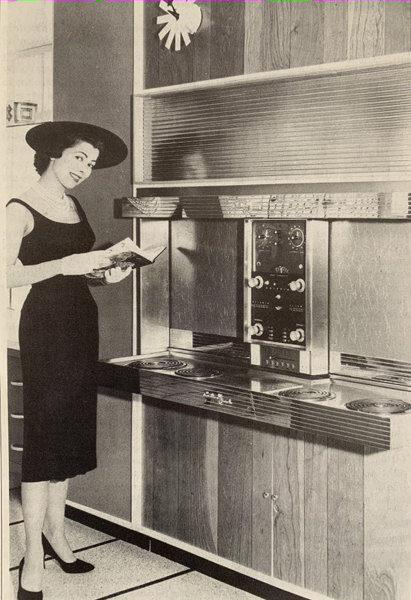
Yet this familiar contrast between the spaced-out 1960s and the grasping 1980s does not hold up. In fact there are no certainties about the 1960s. All that we know is that, compared with the era of Gary Glitter and the Social Contract, they were superior.
In 1960, years before Time asked its provocative question, Alfred Hitchcock had already suggested in Psycho that God was dead. Watch Janet Leigh folding the $40,000 into a newspaper in the steel monochrome solitary confinement of a tiny loo, with the moving, terrible Bernard Herrmann score rising up around her, and it is not hard to agree with the critic, Robin (Hitchcock’s Films) Wood, that the film was almost as much about Dachau and Belsen as it was about Anthony Perkins and his Mum. In the gleaming sunshine of Phoenix, Arizona could be found all the derangement conveyed by the oscillating blacks and whites of Saul Bass’ opening title sequence. Contributing to a 1960 Life series of essays in search of ‘The National Purpose’, Walter Lippmann, one of America’s best-known columnists, also argued that America was at the end of the road: ‘We talk about ourselves’, he wrote, ‘as if we were a completed society, one which has achieved its purposes, and has no further great business to transact’.
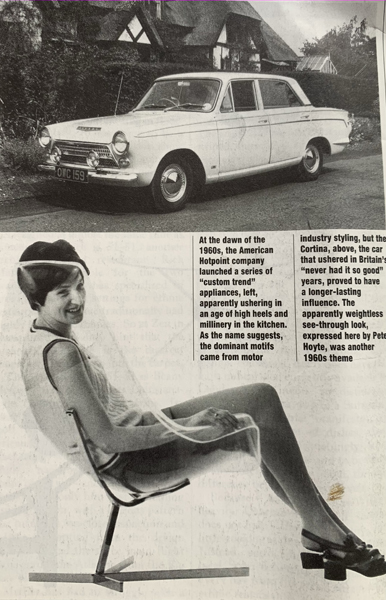
The Kennedys were supposed to change all that. Thin ties, white shirts, idealism. But the Kennedys, we should not forget, launched the Bay of Pigs, Vietnam. Perhaps even more significantly, Robert, through his 1961 Juvenile Delinquency programme, provided not just the model for Medicaid and LBJ’s later Great Society welfare schemes, but a template for every kind of Western government intervention in the ‘inner city’ in the 1980s. Mrs Thatcher has less money to play with now, but the mix of central and local government community development schemes, plus private sector largesse, all fronted with newly-painted pool-halls to keep black disturbances off the streets – this is much as before.
A surge in inequality
Even for whites, the 1960s were not so wealthy as memories of the Maharishi and his garlands imply. There was a boom, yes; but the bigger boom was in commentary about it. In Britain the sociologists Goldthorpe and Lockwood discussed the ‘affluent’ worker in a seminal piece in 1963. Over the water, the celebrated New Deal economist John Kenneth Galbraith proclaimed, in his The new industrial state (1967), that high standards of living were outrageous ‘arrangements for avoiding muscular energy, increasing sensual pleasure and for enhancing caloric intake above any conceivable nutritional requirement’. The key text of the New Left, Herbert Marcuse’s One-dimensional man (1964), inveighed against luxury fall-out shelters complete with carpeting, Scrabble and TV. But what was the reality? In 1965, half of America’s families earned incomes of less than $7000. As late as 1970, nearly one in five non-white American households lacked basic plumbing: in rural areas, the figure was one in two. In the same year, 1000 US car dealers went bankrupt, as automobile output dropped a third below the 1965 peak and lower even than 1950 levels. Again, consumption was much weaker among blacks and Hispanics than among whites – one in every eight white households would buy a new car each year, but among non-whites the figure was one in every 16.
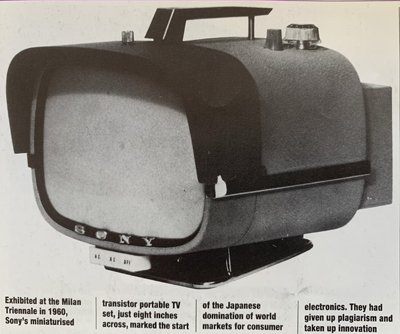
Martin Luther King died on 4 April 1968. As the commemorations will reinforce, it is the continuity of discrimination against black people that is really striking about the USA of the 1960s and that of the 1980s. There are fewer white hoods and no burning crosses, but in wages and housing the differentials persist. Among women, too, there is a similar pattern: while the American women’s movement has weathered the past 20 years much better than the British one, the average woman worker in the USA still makes just 52 per cent of the average male (Lester C Thurow, ‘A surge in inequality’, Scientific American, May 1987).
A legacy: Charles Eames in Docklands
Continuity. In the fiscal year 1969, Governor Ronald Reagan proposed a $6 billion budget for California; but the sum was so big that the state was left without a budget, only for Reagan to follow through by cutting welfare and Medicaid. What a contemporary note is struck by this episode! And again: Chevrolet launched the Corvair in 1960 to deal with West German competition, in the shape of the VW Beetle. By the late 1960s, Japanese car producers were a definite problem for their American rivals. Today, we think of Bonn and Tokyo as economic giants of the 1980s only, but we are wrong. The heat was on a lot earlier.
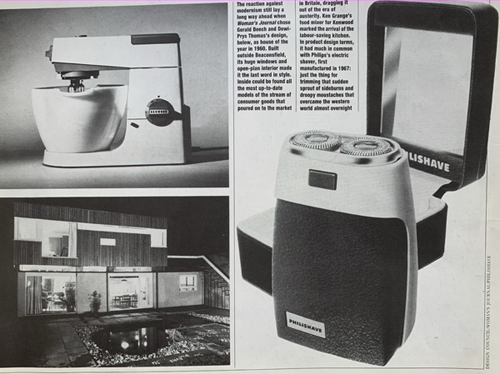
Continuity. Raymond Loewy’s Avanti sports car, designed in 1961 and launched in 1962 by Studebaker, is still in production, all zappy styling, GT performance and American legroom and boot-space. According to the London Waterbed Company, 30 million Americans still sleep on waterbeds and five million new liquid-filled mattresses are bought each year. Reagan’s new National Space Policy, announced in his State of the Union Address of 25 January 1988, reveals that America wants to put men back on the Moon by the turn of the century. The Ohio industrial design consultancy Richardson Smith, lauded in the 1960s for its discreet electric hot-plates and stylish pallet trucks, still runs a thriving business. Charles Eames’ cast aluminium swivel chairs for Herman Miller, complete with electronically welded Naugahyde upholstery, are alive and well and sitting in the offices of the London Docklands Corporation. Miller’s Action Office, designed by Bob Probst, prospers. Ira Schwartz’s tall, green, medallion-hung (no kidding!) bottles of Brut, designed for Faberge in 1964, can still be bought. Hanna Barbara’s Yogi Bear, Fred and Wilma Flintstone, Barney Rubble and Top Cat are back on our screens, as is The Man From Uncle. Elliot Noyes’ petrol pumps and canopies for Mobil, like Chermayeff & Geismar’s logo for the same company, have stood the test of time. So has Paul Rand’s corporate identity for IBM. Even America’s obscure graphics team, the delightfully titled Dickens Design Group, makes its mark. Alberto VO5 has long been lost from British supermarket shelves, but Dickens’ corporate identity for Kimberley Clark lives on.
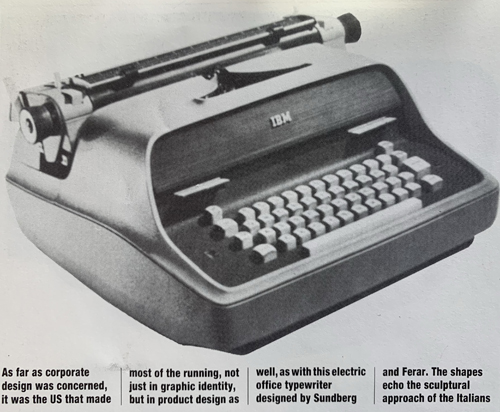
Turning Green
Of course, there are a lot of snide articles nowadays about lefties from 1968 – how they’ve now seen sense, grown out of their youthful ways, etc. There is some truth in this: Jerry Rubin is a stockbroker in Manhattan; Eldridge Cleaver went born-again; Serge July, once a Maoist, now fires staff by the score at the trendy French daily Libération; Bernard Liscia, jailed by Pompidou for leading a groupuscule named Proletarian Left, now runs a fast growing Parisian videotex firm. But for every renegade there is also an unswerving devotee to the cause. Mark Rudd, leader of the dreaded weathermen, is still an activist. So is Abbey (Steal This Book!) Hoffman, at the tender age of 52. Danny Cohn-Bendit has turned into a Green politician.
Clearly some things were different about the sixties, but it is those which are not today covered by the media which interest most. First, there was the rise of corporate identity. It began early, with ‘The mass image of big business’, in an article in a late 1955 issue of the Harvard Business Review. After that came Kenneth Boulding’s The Image (1956), the American Management Association’s first ever seminar on ‘Designing the corporate image’ (1959) and Irwin Ross’ The Image Merchants (1962). Even before the decade began, in 1959, there was a 20 per cent increase in the number of registered US trademarks, including new ones for General Dynamics, US Steel and US Plywood. Thereafter Lippincott and Margulies vamped and revamped lumbering Con Ed; Chrysler, despite making large, indifferent cars for middle-aged Americans, adopted a fresh ‘Pentastar’ logo in 1963-4, as sales boomed (by the end of the decade it had raised its market share from 10 to 18 per cent, against Ford’s Lee Iacocca); Paul Rand gave Westinghouse its friendly robots W. Altogether, graphics consultancy mushroomed.
Naïve optimism
Alongside the spread of corporate identity there was a broader increase in visual awareness. Big US companies purchased more fine art than ever before and began to sponsor culture on TV. Museum visits in the US doubled to 300 million, 1957-67. Even at the mundane level of the photocopied image, public consciousness grew significantly. Between 1959 and 1966, the value placed on Xerox Corporation’s stock multiplied an astonishing 66 times.
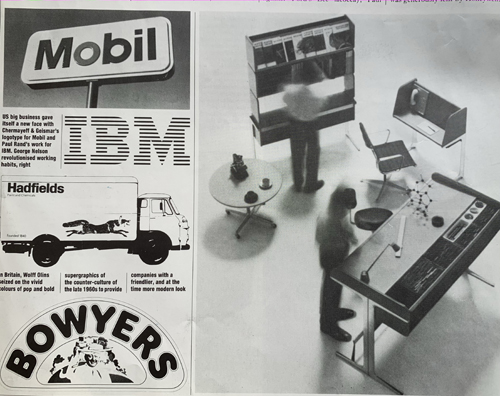
In Britain, too, the visual became more arresting, but here the pre-eminence of 2D over 3D design was an unnoticed portent of deindustrialisation. Esso’s tiger, BP’s travel kits for families and the saucy, nozzle-toting women in the ads for Regent petrol had more mass impact than the Ferrari, the E-type or the Lotus. The Penguin jackets of Derek Birdsall and John McConnell, the stamps of David Gentleman and the cartoons of Mel Calman probably did more to open British eyes than Alec Issigonis’s Mini. As ever, Britain triumphed in media, not hardware. When I last saw Ken Russell’s Billion Dollar Brain, the ultra-1960s pink LED title sequence, all Honeywell magnetic discs whirring, made me weep for its optimism.
The importance of corporate identity and graphics to the 1960s is confirmed when we compare the mingy cassettes and CDs of today with the record sleeves of Elektra (The Doors, Love), or, more sedately, of Blue Note. But in the US, at least, industrial design was big business in the 1960s, even if it is now forgotten. Anonymous in-house departments did a lot – for Honeywell, for RCA. General Electric appliances were hardly commendable, and Ampex’s enormous VCRs, clad in vinyl, certainly raise a chuckle now, In hi-fi, the products of Philco-Ford Corporation were little match for J B Lansing, and kind of Bang & Olufsen for Americans: both, however, displayed a fondness for asymmetrical fascias, serif type (usually in tall capitals) and brushed, painted finishes. In consumer products, Lightolier’s cube-base, spherical top, telescopic arm table lamps were a byword for Bauhaus excellence. But it was the big consultancies of the 1930s that led the industrial design field in the 1960s. Walter Dorwin Teague’s office did machine tools; Harley Earl’s, microfilm readers for 3M; Donald Deskey’s, street lighting. Now all these names have vanished. Only the studio of Henry Dreyfuss, then a pioneer of plastics phones, push-button trim phones, the Polaroid 100 and the sensible Hyster truck, is still extant.
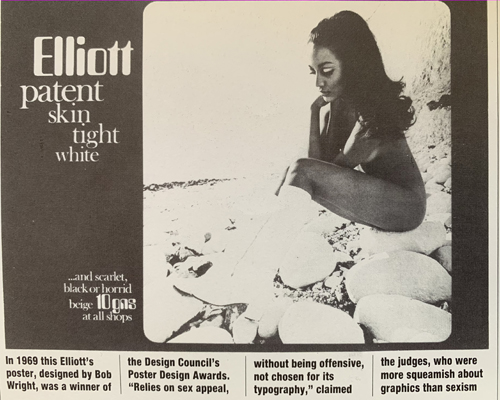
The demise of classical US industrial design after the 1960s had much to do with newly trained graduates moving into education rather than design practice. A symptom was the career of Arthur Pulos: having done power tools for Rockwell 20 years ago, he is now a professor at Syracuse University and the doyen of US design history. Yet a more basic cause of industrial design’s new ‘low profile’ (the phrase, let us recall, is Nixon’s, about Watergate) was the hostility to waste that emerged at the end of the decade.
Styling was out; instead, Victor Papanek recommended turning scrap-heap car roofs into Bucky Fuller domes to dwell in. Today, people can still remember Ralph Nader (Unsafe At Any Speed, 1965); but it is not so well known that, at the end of the decade, a certain Gary Hart indicted US food manufacturers for their packaging. Senator Hart calculated that the use of large, ‘economy’ boxes in fact cost US consumers a cool $14 billion a year. He does not make the same complaint now.
The waste of US society was a big theme of the main work of radical political economy of the 1960s, Paul Baran and Paul Sweezy’s Monopoly Capital (1966). It was also attacked, and much more provocatively, in Jessica Mitford’s salvo against expensive, thriving-on-guilt US funeral parlours, The American Way of Death (1963).
Useless sentimentality
That was a funny thing about the 1960s: despite the 23 printings that Tom Wolfe’s Electric Kool-Aid Acid Test went through in its first decade after 1968, death, not exuberant hippie life, was in some ways a bigger issue then than it is now. There was William Manchester’s Death of a President (1967), but the spate of assassinations in the 1960s was by no means the end of the matter, as the ghoulish popularity of Truman Capote’s deadpan small-town documentary, In Cold Blood (1965) revealed. Similarly, we all know that the punch to Easy Rider (1969) lay in the murderous finale; but how many remember the National Guard shooting four students at Kent State, Ohio, an obscure mid-Western university?
In the middle of the boom, as Time and Hitchcock made clear, Western society experienced a frightening shudder. 1968, the year of years, was a reflection of this. Such, for me, is the real uniqueness of the 1960s, and the real dynamic of a recession likely to be longer, deeper and more fracturing than the setbacks of the 1970s.
Against that, all the yearning for the good old times is useless sentimentality.
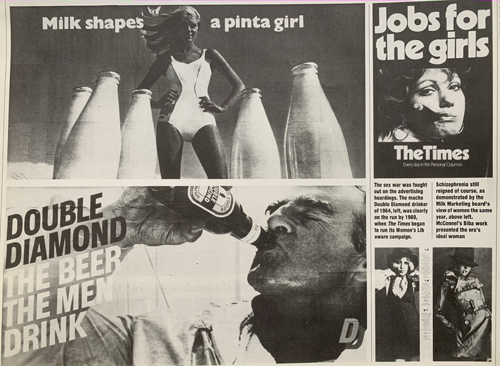
Fmr President of Kenya on Trump cutting off foreign aid:
“Why are you crying? It’s not your government, he has no reason to give you anything. This is a wakeup call to say what are we going to do to help ourselves?”
America first is good for the world.
Our entire Green Socialist establishment should be banged up under the ‘Online Safety’ laws, for spreading demonstrable lies (the ‘climate crisis’), causing non-trivial harm to the industrial working class, ordinary drivers, farmers, taxpayers etc, etc.
#Chagos? #Mauritius PM Navin Ramgoolam "is reported to want Starmer to pay £800m a year, plus ‘billions of pounds in #reparations’." (14 January) https://www.spiked-online.com/2025/01/14/the-chagos-islands-deal-is-an-embarrassment/
Now the Torygraph wakes up https://telegraph.co.uk/gift/1ff8abbb462cd609
Read @spikedonline - first with the news!
Articles grouped by Tag
Bookmarks
Innovators I like

Robert Furchgott – discovered that nitric oxide transmits signals within the human body

Barry Marshall – showed that the bacterium Helicobacter pylori is the cause of most peptic ulcers, reversing decades of medical doctrine holding that ulcers were caused by stress, spicy foods, and too much acid

N Joseph Woodland – co-inventor of the barcode

Jocelyn Bell Burnell – she discovered the first radio pulsars

John Tyndall – the man who worked out why the sky was blue

Rosalind Franklin co-discovered the structure of DNA, with Crick and Watson

Rosalyn Sussman Yallow – development of radioimmunoassay (RIA), a method of quantifying minute amounts of biological substances in the body

Jonas Salk – discovery and development of the first successful polio vaccine

John Waterlow – discovered that lack of body potassium causes altitude sickness. First experiment: on himself

Werner Forssmann – the first man to insert a catheter into a human heart: his own

Bruce Bayer – scientist with Kodak whose invention of a colour filter array enabled digital imaging sensors to capture colour

Yuri Gagarin – first man in space. My piece of fandom: http://www.spiked-online.com/newsite/article/10421

Sir Godfrey Hounsfield – inventor, with Robert Ledley, of the CAT scanner

Martin Cooper – inventor of the mobile phone

George Devol – 'father of robotics’ who helped to revolutionise carmaking

Thomas Tuohy – Windscale manager who doused the flames of the 1957 fire

Eugene Polley – TV remote controls

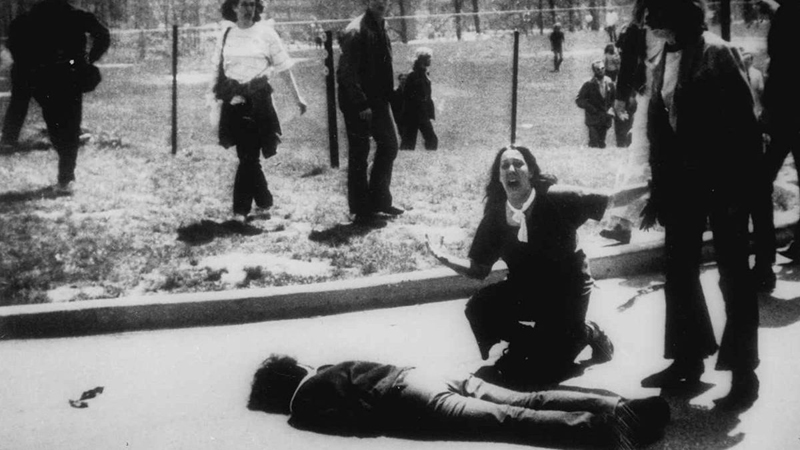

0 comments